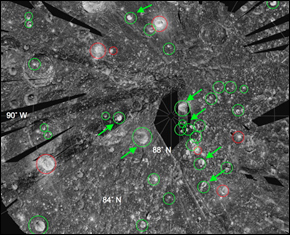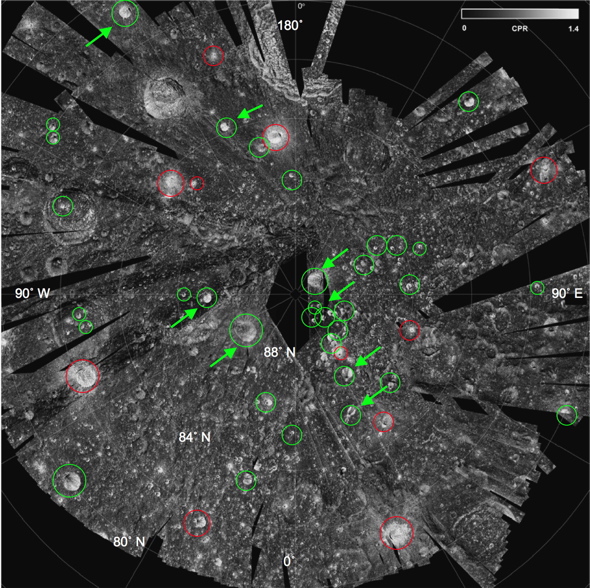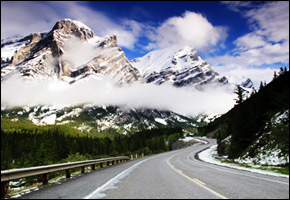Millions of Tons of Ice Found at Moon’s North Pole
The new discovery on the moon contains millions of tons of frozen freshwater that could support life.

NASA announced yesterday that a moon probe discovered enough water on the north pole to potentially help generate oxygen or sustain a moon base, Wired Magazine reports.
India’s Chandrayaan-I lunar orbiter, which was carrying NASA radar equipment, found ice in 40 craters that ranged in size from 1 to 9 miles in diameter. Based on the discovery, scientists estimate that there are at least 600 million tons of in the area.
“Now we can say with a fair degree of confidence that a sustainable human presence on the Moon is possible. It’s possible using the resources we find there,” Paul Spudis, from the Lunar and Planetary Institute in Houston, told the BBC.
He added that new data from lunar missions in the past few months have revolutionized scientists’ view of the moon.
The ice had to be relatively pure and at least several feet thick to be detected by the probe, NASA officials said. The probe transmits polarized radio waves in which smooth surfaces return right-polarized waves, while rough areas return left-polarized waves. Afterward the probe detects a ratio, called the Circular Polarized Ratio (CPR), of returning left-polarized radio waves to returning right-polarized waves.
These north pole craters had a high CPR internally and a low CPR on their rim, a unique pattern which indicates ice enclosed in the craters rather than mere surface roughness.
“There’s not one flavor of water on the Moon; there’s a range of everything from relatively pure ice all the way to adsorbed water,” Anthony Colaprete, the mission’s chief scientist from NASA’s Ames Research Center, told the BBC.
Polar lunar ice comes from several sources, including interaction with solar wind, migration to the poles’ cooler temperatures, comets and asteroids.
Researchers also found a range of other compounds on the moon’s north pole, including sulfur dioxide and carbon dioxide.
As the results from the latest north pole exploration will be published soon, scientists are still analyzing tests from craters at the moon’s south pole.
Sources: Wired Magazine, BBC
is a Washington, D.C–based correspondent for Circle of Blue. He graduated from DePauw University as a Media Fellow with a B.A. in Conflict Studies. He co-writes The Stream, a daily summary of global water news.








Leave a Reply
Want to join the discussion?Feel free to contribute!